#printify vs printful
Explore tagged Tumblr posts
Text
My Path to a Print-On-Demand Business
Finding the Right Print-On-Demand Service: Why I Chose Printful Over Printify
Hey everyone,
As I embarked on my journey to start a print-on-demand (POD) business, one of the first and most crucial decisions I had to make was choosing the right POD service. After extensive research and consideration, I decided to go with Printful over Printify. Here’s a rundown of my experience and why I believe Printful is the more user-friendly option, especially for beginners.
The Search for the Perfect POD Service
When I first started exploring POD services, I felt like a kid in a candy store 🍭, except the candy was replaced with endless options for printing custom designs. I needed a platform that was easy to use, offered a wide range of products, and provided excellent customer service. After reading numerous reviews and comparing different platforms, I narrowed my choices down to two: Printful and Printify.
Why Printful Stood Out
Beginner-Friendly: As someone new to the world of POD, I found Printful to be incredibly beginner-friendly. The platform provides extensive tutorials, guides, and resources that made my transition into this new venture smooth and enjoyable. It's like having a knowledgeable friend guiding you every step of the way 🛠️.
User-Friendly Interface: One of the first things that attracted me to Printful was its intuitive and user-friendly interface. As an IT project manager, I appreciate well-designed software, and Printful’s platform is clean, easy to navigate, and straightforward. It's like the IKEA of POD services – without the missing screws 🛋️!
Wide Range of Mockups: Printful offers a vast array of mockups, which is fantastic for showcasing products in a professional and appealing manner. These mockups are a great tool for marketing and help bring the designs to life 📸.
Wide Range of Products: Printful offers an extensive range of products, from apparel to home decor, which aligns perfectly with my goal to expand beyond just pillows in the future. This flexibility is a significant advantage for anyone looking to grow their POD business. Plus, who doesn't want to print their face on a pair of socks? 🧦
Integration Options: Printful seamlessly integrates with popular e-commerce platforms like Shopify, Etsy, and WooCommerce. This makes it easier to manage my store and sync orders automatically, saving me time and effort. No more copy-pasting like it’s the 90s ⏳!
No Monthly Fees: Printful doesn’t charge any monthly fees, which is great for someone just starting out. You only pay for the products when an order is placed, making it a cost-effective choice for new entrepreneurs. My wallet heaved a sigh of relief 💸.
Pros and Cons: Printful vs. Printify
Printful Pros:
Beginner-Friendly: Extensive tutorials and resources to help you get started 🏁.
User-friendly interface and intuitive design tools. It’s like they read my mind 💡.
Wide range of products, including unique items like custom pillows. You can even print your cat's face on a pillow – if that's your thing 🐱.
Extensive array of mockups for professional and appealing product presentations 🖼️.
Seamless integration with major e-commerce platforms. Automation, baby! 🤖
No monthly fees; pay-as-you-go model. Only pay when you make money – sounds like a dream, right? 💭
Printful Cons:
Higher base prices compared to some competitors, including Printify. Quality comes at a price, but it's worth it! 💰
Limited customization options for certain products. Sometimes, simplicity is key 🗝️.
Printify Pros:
Competitive pricing with lower base costs for products. Your wallet will thank you 💲.
Access to a network of print providers, offering a variety of printing options and locations. Options, options, options! 🌐
Flexibility in choosing print providers based on price and location. Play it smart, choose your printer! 🎯
More product options than Printful, giving you a wider selection to choose from for your store 🛍️.
Printify Cons:
The interface is less intuitive compared to Printful. A bit like navigating a maze without a map 🗺️.
Some users report issues with customer service response times. Patience is a virtue, they say ⏳.
Final Thoughts
While both Printful and Printify have their strengths, Printful’s beginner-friendly approach, user-friendly interface, extensive product range, wide array of mockups, and seamless integrations ultimately made it the better choice for me. The decision came down to ease of use and the ability to manage my store efficiently, both of which are critical when managing a new business inspired by a personal passion. Plus, who doesn't love a platform that feels like it was designed just for you? 🎨
For anyone considering starting a POD business, I recommend weighing the pros and cons based on your specific needs and goals. Both platforms offer unique advantages, and what works for one person might not be the best for another.
Thank you for joining me on this journey. I look forward to sharing more about my experiences, the creative process behind my designs, and maybe a few more jokes along the way 😂.
Warm regards, Ivo
#Print-On-Demand Business#Printful vs Printify#Beginner-Friendly POD Platforms#Choosing a POD Service#Printful Review#Printify Review#POD Business Tips#Starting a POD Business#Custom Pillow Designs#E-commerce Integration for POD
0 notes
Text
Essential Knowledge Before Launching Your Sticker Making Business
The vibrant world of custom stickers offers a fantastic opportunity for creative entrepreneurs. From personalizing everyday items to boosting brand visibility with unique label products, stickers are in constant demand. However, before you dive headfirst into cutting and printing, there are crucial aspects to understand to ensure your venture sticks around for the long haul. This detailed guide will equip you with the knowledge to navigate the existing, yet competitive, landscape of the sticker making business.
Nailing Your Niche and Design Vision: The sticker market is vast. Simply “making stickers” isn’t enough. Success hinges on identifying your specific niche and developing a distinct design aesthetic.
Define Your Target Audience: Who are you selling to? Enthusiastic crafters, small business owners needing branding, car enthusiasts, pop culture fans, or planners and journalers? Understanding your audience dictates your designs, marketing, and even pricing.
Unique Selling Proposition (USP): What makes your stickers different? Is it your artistic style, specialized materials (e.g., holographic, glitter, glow-in-the-dark), a focus on a particular theme (e.g., whimsical animals, minimalist typography, political satire), or customizability?
Design Quality is King: Your designs are the heart of your business. Invest time in developing appealing and original artwork. If you're not a seasoned graphic designer, consider collaborating with one or investing in design courses.
Mastering Your Tools: Sticker Design & Making Software: The right software can streamline your workflow and elevate your product.
Essential Sticker Design Software
Adobe Illustrator: The industry standard for vector graphics, offering unparalleled precision and scalability. Ideal for creating sharp, professional designs that can be resized without losing quality.
Procreate (iPad only): A powerful digital art app for hand-drawn, illustrative styles, perfect for unique artistic stickers.
Canva: User-friendly for beginners, offering a vast library of templates and design elements. Excellent for quick designs and those without extensive graphic design experience.
Silhouette Studio/Cricut Design Space: If you're using a Silhouette or Cricut cutting machine, their proprietary software is essential for preparing your designs for cutting.
Inkscape: A free and open-source alternative to Adobe Illustrator, offering robust vector editing capabilities.
Sticker Making Software (Beyond Design): While design software creates the art, some tools are specifically geared towards the production and management of sticker orders. Look for features like:
Automatic contour cutting: Software that generates cut lines around your designs for precise cutting machines.
Nesting capabilities: Efficiently arranging multiple designs on a single sheet to minimize material waste.
Batch processing: Printing and cutting multiple designs simultaneously.
Production Methods: DIY vs. Outsourcing: Deciding how to produce your stickers is a critical early decision.
DIY Production (In-House)
Equipment: A high-quality inkjet printer (for vibrant colors, especially for smaller runs), suitable sticker paper (vinyl for durability, waterproof options), and a cutting machine (e.g., Cricut, Silhouette Cameo) are common investments. A laminator can add durability and different finishes.
Pros: Full creative control, faster turnaround for small orders, higher profit margins per sticker.
Cons: Higher upfront investment in equipment, time-consuming, learning curve for design and machine operation, limited scalability for large orders.
Outsourcing (Print-on-Demand or Wholesale):
Print-on-Demand (POD): Services like Printify or Redbubble allow you to upload your designs, and they handle printing, fulfillment, and shipping when an order comes in.
Pros: Minimal upfront cost, no inventory management, wide product range, global reach.
Cons: Lower profit margins per sticker, less control over material quality and production, can impact branding if packaging isn't customizable.
Wholesale Manufacturers: Partnering with a dedicated sticker manufacturer for bulk orders.
Pros: Best per-unit cost for large quantities, professional quality, variety of specialized finishes and materials.
Cons: High upfront minimum order quantities (MOQs), longer lead times, less flexibility for small, custom orders.
Material Matters: Choosing the Right Label Products: The durability, appearance, and application of your stickers largely depend on the materials you choose.
Vinyl: The most popular choice due to its durability, waterproofing, and UV resistance, making it suitable for outdoor use, water bottles, and laptops. Available in various finishes (matte, glossy, holographic).
Paper: More affordable and often used for indoor applications like planners, journals, and packaging. Less durable than vinyl.
Specialty Materials: Consider clear vinyl, glitter vinyl, holographic films, or reflective materials to add unique effects and appeal to specific niches.
Adhesive Type: Permanent vs. removable adhesives. Permanent is great for long-lasting applications, while removable is ideal for temporary decals or surfaces that need to remain undamaged.
Selling Your Stickers: Web-to-Print Storefront Solutions & Beyond: Once you have your designs and production method sorted, it's time to reach your customers.
Your Own E-commerce Store (Recommended): Platforms like Shopify, WooCommerce (for WordPress), or Wix offer robust features for setting up an online shop.
Web-to-Print Storefront Solutions: For custom sticker businesses, integrating a web-to-print solution is a game-changer. These platforms allow customers to customize designs directly on your website, upload their own artwork, and instantly see a preview. This drastically improves the user experience and automates the design-to-order process. Look for solutions like OnPrintShop or PrintXpand that offer:
Online Design Tool: User-friendly interface for customization.
Instant Previews: Customers can visualize their personalized stickers.
Pricing Calculator: Real-time pricing based on size, quantity, and material.
Order Management: Streamlined workflow from design to production and shipping.
Online Marketplaces: Etsy, Amazon Handmade, and Redbubble are excellent starting points to gain exposure and test your market.
Pros: Existing customer base, built-in marketing tools, lower technical barrier to entry.
Cons: Higher fees, less control over branding, more competition.
Social Media: Instagram, TikTok, and Facebook are powerful tools for showcasing your designs, engaging with your audience, and driving traffic to your store.
Local Markets and Fairs: An excellent way to connect with customers in person, get direct feedback, and build brand recognition within your community.
Legal & Business Formalities: Don't overlook the administrative side of your business.
Business Registration: Register your business with the appropriate authorities in your region (e.g., sole proprietorship, LLC).
Licenses and Permits: Research any specific licenses or permits required for selling goods in your area.
Tax Obligations: Understand your tax responsibilities, including sales tax and income tax.
Intellectual Property: Protect your original designs by understanding copyright and trademark laws. Be mindful of not infringing on others' intellectual property.
Business Bank Account: Keep personal and business finances separate for easier tracking and tax purposes.
Marketing and Growth Strategies: Getting started is one thing; sustained success requires effective marketing.
High-Quality Product Photography: Showcase your stickers with clear, appealing images that highlight their details and uses.
Content Marketing: Create blog posts, social media content, or videos related to stickers, their uses, or your design process.
SEO (Search Engine Optimization): Optimize your website and product listings with relevant keywords (e.g., "custom vinyl stickers," "laptop decals," "planner stickers") to improve search engine visibility.
Social Media Engagement: Interact with your audience, run contests, and utilize relevant hashtags to expand your reach.
Email Marketing: Build an email list to send out newsletters, promotions, and new product announcements.
Collaborations: Partner with influencers, other small businesses, or artists to cross-promote your products.
Customer Service: Provide excellent customer service to build loyalty and encourage repeat business.
Conclusion
Starting a sticker making business can be a deeply rewarding venture, blending creativity with entrepreneurship. By carefully considering your niche, investing in the right sticker design software and sticker making software, choosing appropriate label products, and leveraging powerful web-to-print storefront solutions, you can build a thriving brand. Remember, success in this colorful industry isn't just about beautiful designs; it's about strategic planning, efficient execution, and a passion for bringing your unique artistic vision to life, one sticky creation at a time.
#sticker design#custom stickers#stickers making#product design tool#web to print#sticker design software
0 notes
Text
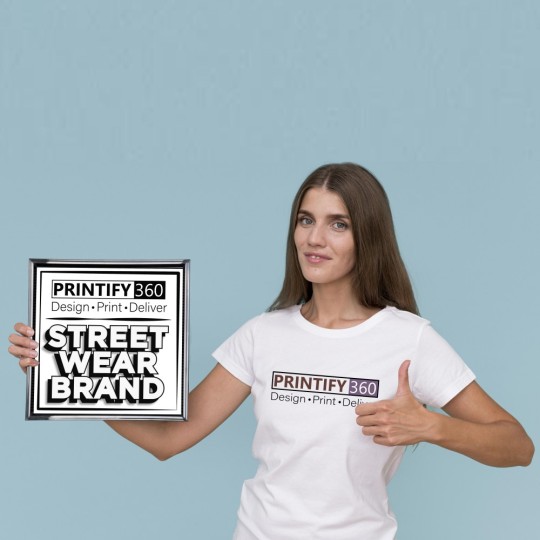
How to Match Colors and Prints in T-Shirt Design
Color is more than aesthetics—it’s communication. In custom t-shirt design, choosing the right shirt color and matching it to your print determines how effective and visible your message will be.
Here’s how to get the most out of color and print alignment:
1. High Contrast = High Visibility
Dark print on light shirts
Light print on dark shirts Simple but incredibly effective.
2. Stick to Brand ColorsUse your official brand colors (HEX/Pantone). Inconsistency weakens brand identity.
3. Screen ≠ FabricA color that looks vibrant on screen may appear dull on cotton. Always test before bulk production.
4. White Isn’t Always RightWhite shirts are classic, but sometimes too plain. Try pastel bases for a softer yet unique look.
5. Use Color Psychology
Blue: Trust & calm
Red: Energy & urgency
Green: Natural & fresh
Black: Bold & premium Match your color to your message.
6. Match Color to Print Method
DTG works best on light bases
Screen printing suits dark colors too
Sublimation only works on light polyester fabrics
At Printify360, we offer color consulting and mockups for every order.Let’s build your shirt to make your message pop
@printify360
#CustomDesign, #TshirtLovers, #HobbyStyle, #ClubMerch, #PrintOnDemandLife, #HomeDecorWithStyle
t-shirt color matching, best shirt color for prints, brand color t-shirt, contrast printing guide, custom shirt design tips, printing on dark shirts, print color psychology, dtg vs screen print colors, sublimation color compatibility, shirt color selection, branded shirt design, logo visibility on shirts, color strategy for apparel, t-shirt base color choice, mockup before print
#t-shirt color matching#best shirt color for prints#brand color t-shirt#contrast printing guide#custom shirt design tips#printing on dark shirts#print color psychology#dtg vs screen print colors#sublimation color compatibility#shirt color selection#branded shirt design#logo visibility on shirts#color strategy for apparel#t-shirt base color choice#mockup before print
0 notes
Text
How Do I Find a Good T-Shirt Supplier?

Whether you're starting a clothing brand, running a promotional campaign, or launching a custom apparel business, finding the right t-shirt supplier is crucial. A good supplier ensures high-quality products, timely deliveries, and cost-effective pricing. But with so many options available, how do you identify the best one? This guide will help you navigate the process of finding a reliable t-shirt supplier that meets your needs.
Factors to Consider When Choosing a T-Shirt Supplier
1. Quality of Materials
The fabric quality plays a significant role in determining the comfort, durability, and appeal of the t-shirts. Look for suppliers offering:
100% cotton, polyester, or blended fabrics depending on your needs
Pre-shrunk material to avoid size issues after washing
Eco-friendly and sustainable fabric options
2. Customization Options
If you're looking for personalized t-shirts, find a supplier who provides:
Screen printing, embroidery, or heat transfer printing services
Custom labels, tags, and packaging
Various color and size options to cater to diverse customer preferences
3. Pricing and Bulk Discounts
Compare pricing across different suppliers. Some key aspects to check:
Cost per unit and bulk order discounts
Shipping fees and additional charges
Minimum order quantity (MOQ) requirements
4. Turnaround Time and Reliability
Fast and timely delivery is crucial, especially for businesses with tight deadlines. Ask potential suppliers about:
Average production time
Shipping policies and estimated delivery schedules
Their track record of fulfilling urgent or bulk orders
Where to Find Reliable T-Shirt Suppliers
1. Local vs. Overseas Suppliers
Decide whether you want a local supplier or an overseas manufacturer. While international suppliers may offer lower prices, local suppliers provide:
Faster delivery and lower shipping costs
Easier communication and quality checks
Better support for custom requirements
For example, t shirt manufacturers in Chennai are known for their high-quality production standards and ability to handle bulk orders efficiently. Their expertise in textile manufacturing makes them a preferred choice for both startups and established brands.
2. Online Directories and Marketplaces
Several online platforms list reputable t-shirt suppliers, such as:
Alibaba – A global marketplace with thousands of suppliers
IndiaMART – Ideal for finding Indian-based manufacturers like t shirt manufacturers in Chennai
Printful & Printify – On-demand printing and dropshipping options
Etsy Wholesale & Faire – Best for independent businesses and unique designs
3. Trade Shows and Industry Events
Attending trade shows allows you to:
Meet suppliers face-to-face and inspect sample products
Negotiate better deals directly with manufacturers
Stay updated on the latest trends and technologies in apparel production
Some major textile expos in India showcase top t shirt manufacturers in Chennai giving businesses a chance to explore multiple options in one place.
4. Supplier Reviews and Testimonials
Always check reviews before finalizing a supplier. Look for:
Customer feedback on product quality, service, and reliability
Case studies or references from brands they've worked with
Ratings on online marketplaces like Amazon, IndiaMART, or Trustpilot
Final Thoughts: Making the Right Choice
Finding the right t-shirt supplier takes research and careful consideration. Whether you opt for local t shirt manufacturers in Chennai or explore international options, prioritize quality, pricing, and reliability. A good supplier will not only meet your needs but also contribute to the growth of your brand.
Ready to Find Your Ideal T-Shirt Supplier?
Start your search today by exploring trusted suppliers, comparing quotes, and requesting samples. Partner with the best to ensure top-notch products for your business!
0 notes
Link
As a seasoned print-on-demand seller who's dabbled in both platforms, I can confidently say that Printify takes the crown. While Amazon Merch on Demand offers a user-friendly setup and top-notch fulfillment services, Printify provides the tools you need to truly scale your business. Printify's edge lies in its versatility. You can create and sell a diverse array of high-quality customized products across multiple channels, including Amazon. Plus, you'll benefit from advanced design tools, bonus features like Printify Studio, and even a free pop-up store creator. In my book, it's a clear winner. But if you're still on the fence, let's dive into a comprehensive comparison of these two print-on-demand giants. The Verdict: Printify Comes Out on Top While Amazon's lightning-fast Prime shipping and built-in customer base are undeniably attractive, Printify's arsenal of features gives it the upper hand. From AI-powered design tools to a wider product catalog, Printify offers a more robust platform for ambitious POD entrepreneurs. Amazon Merch on Demand: Pros and Cons Pros: Instant access to Amazon's massive customer base Prime shipping for speedy deliveries Stringent quality control measures Beginner-friendly setup and interface Quick royalty payouts Insightful analytics for tracking bestsellers Cons: Severely limited product range Few integration options Royalty structure can squeeze profit margins Fierce competition on the Amazon marketplace Printify: Pros and Cons Pros: Extensive catalog of customizable products Seamless integration with various sales channels and marketplaces Free pop-up store creator Diverse network of global manufacturers Robust branding options Cutting-edge AI-powered design tools Flexibility to choose reliable suppliers for quality, speed, and customization Cons: Variability in pricing, product quality, and shipping times Customer support can be sluggish at times Pricing, Fees, and Profit Potential: A Head-to-Head Comparison Good news for budget-conscious entrepreneurs: both Printify and Amazon Merch on Demand offer free startup options. You can launch your t-shirt empire with minimal upfront costs on either platform. The print-on-demand model eliminates inventory headaches, as both services handle production, shipping, and customer support. The online t-shirt market is booming, making it an enticing opportunity for savvy sellers. With its massive reach and growth potential, selling custom tees on Amazon can be a lucrative venture for those who play their cards right. In conclusion, while both platforms have their merits, Printify's comprehensive toolkit and flexibility make it the superior choice for most print-on-demand sellers looking to build a scalable business. Amazon Merch: The Cost-Free Gateway to Print-on-Demand [caption id="attachment_102771" align="alignnone" width="1024"] Printify vs Amazon Merch: amazon merch on demand homepage[/caption] This platform offers a unique proposition: zero fees to start selling. No hidden charges, no premium tiers – just pure, unadulterated access to Amazon's vast marketplace. The Royalty Conundrum Here's the kicker, though. While you're not shelling out cash upfront, you're not exactly raking in the big bucks either. Amazon's royalty system is, well, let's call it modest: Sell a tee for $15.99? You pocket a cool $1.93. Want to set your own prices? Tough luck. Dreaming of managing profit margins? Keep dreaming. Amazon calls the shots on pricing, which can feel like a tight leash for ambitious sellers. The Silver Lining But don't write off Amazon Merch just yet. There's a bright side to this arrangement: Zero upfront costs – seriously, not a penny. No need to crunch numbers on base prices. Shipping fees? Not your problem. List it, forget it, and wait for the royalties to trickle in. It's a hands-off approach that might just be your ticket to passive income paradise. In the end, Amazon Merch offers a trade-off: simplicity and market access in exchange for lower profit potential. Is it the right fit for your entrepreneurial journey? Only you can decide if the ease of use outweighs the limited earning potential. Printify Pricing [caption id="attachment_102041" align="alignnone" width="1024"] Printify vs Amazon Merch: Printify on demand homepage[/caption] Printify vs Amazon Merch: Unveiling the Print-on-Demand Titans Both offer a gateway to entrepreneurship, but their paths diverge in crucial ways. Let's dive into the nitty-gritty of these platforms and see how they stack up. Printify: Flexibility at Your Fingertips Printify's approach is all about giving you the reins. Here's the lowdown: Free to start: Launch your store without spending a dime. Pay-as-you-go: Only shell out when orders roll in. Profit control: Set your prices and margins as you see fit. Affordable base costs: Competitive pricing, especially compared to some rivals. Scaling Up with Printify As your business blooms, Printify grows with you: Premium plan: $24.99/month (annual billing) Boost store limit from 5 to 10 Unlock up to 20% product discounts Enterprise plan: Custom pricing for high-volume sellers Extra perks: Add-on services like Printify Studio for web development Amazon Merch: Simplicity Meets Reach Amazon's offering is straightforward but powerful: No upfront costs: Zero fees to list your products. Fixed royalties: Amazon sets the prices, you get a cut. Massive marketplace: Tap into Amazon's vast customer base. Hands-off approach: Amazon handles customer service and shipping. Feature Faceoff: Printify vs Amazon Merch When it comes to features, these platforms are worlds apart. Let's break it down: Product Variety Printify: 900+ products, from tees to coffee mugs Amazon Merch: Limited selection (t-shirts, tote bags, sweaters) Quality Control Amazon: Strict protocols, latest equipment Printify: Varies by manufacturer, but generally high standards Design Tools Printify: Rich customization options AI-powered design generator Free design assets Amazon: Basic upload and positioning tools Limited customization Pricing Control Printify: Full control over pricing and margins Amazon: Fixed pricing model In the end, your choice boils down to what you value most: Printify's flexibility and variety, or Amazon's simplicity and massive reach. Whichever you choose, the print-on-demand world is your oyster. Ready to make your mark? Printify vs Amazon Merch: Unlocking the Potential of Print-on-Demand In the ever-evolving landscape of e-commerce, print-on-demand (POD) platforms have become a game-changer for aspiring entrepreneurs. Two titans in this arena, Printify and Amazon Merch, offer distinct paths to success. Let's dive into the nitty-gritty of these platforms and see how they stack up against each other. Expanding Your Horizons: Sales Channels and Integrations When it comes to maximizing your reach, the more channels you can tap into, the better your chances of striking gold. Here's how our contenders measure up: Amazon Merch: The Marketplace Mogul Grants access to Amazon's colossal customer base Allows selling designs elsewhere, but without direct integrations Limited to Amazon's ecosystem Printify: The Integration Innovator Offers a free "pop-up store" for instant selling Seamlessly integrates with e-commerce giants (Shopify, Wix, etc.) Connects to marketplaces like Amazon and Etsy Embraces social commerce with TikTok Shop integration Provides a custom API for creating automated workflows Customer Support: The Backbone of Success In the world of e-commerce, robust customer support can make or break your business. Let's see how our contenders fare: Amazon Merch: Streamlined but Limited Email-only support for vendors Known for quick response times Basic self-help resources available online Printify: The Support Superstar Multi-channel support (chat, email) Extensive knowledge base (blogs, videos, tutorials, guides, FAQs) Responsive manufacturer support Optional add-on services (design support, product transfer assistance) The Verdict: Printify Takes the Crown After weighing the pros and cons, Printify emerges as the clear victor. Here's why: Product Variety: 900+ options vs. Amazon's limited selection Customization: Robust design tools and options Sales Channels: Flexible integrations across multiple platforms Customer Support: Comprehensive assistance across various channels While Amazon Merch offers the allure of its massive marketplace and Prime shipping, Printify outshines in nearly every other aspect. For entrepreneurs looking to scale and grow their online presence, Printify provides the tools and flexibility needed to thrive in the competitive world of print-on-demand. Ready to embark on your POD journey? Consider giving Printify a spin and unlock the full potential of your creative endeavors!
0 notes
Text
Story time: Etsy vs. Redbubble
This one's for the other artists out there who might be thinking about making a shop like mine.
I've been making print on demand stuff for about ten years, well before it was a Side Hustle TM that tech bros claimed would make you thousands of dollars a month if you just use AI to make your images and your mockups and your product descriptions. (Pass.)
But I didn't start on Etsy. I used to sell on Redbubble, which does a lot of work for you, but at the cost of not having the kind of control over product quality that you get from using Etsy with Printify integration and doing a lot of the work by hand. With my setup now, I can choose the brand of blank product I'm using, choose the printing companies I'm sending orders to, and even really simple things like only offering certain T-shirt colors for a given design.
(Redbubble offers EVERY color they have and you can't change it, so I was always putting white outlines on things to make sure that the design would at least show up on every color. You'd think that people just wouldn't order a black design on a black T-shirt, but I've made the mistake of ordering a purple shirt with black text from Redbubble and being surprised at how dark the color was. You can still see the white outlines on a few of my older designs, like the Wreaking Havoc for Fun and Profit cat. AI will not think about this for you, by the way.)
Redbubble's also been doing some weird desperate shit where new artists or anyone who doesn't sell frequently enough can get their commission yoinked by some kind of membership fee thing. I wasn't personally affected by this, because a) I'd already started moving to Etsy, and b) my Redbubble shop had already sold enough to not have to deal with those fees. I don't upload there any more, though. Not a fan of the thing they're doing. I don't recommend that anyone start there any more. Society6 has been doing basically the same thing but worse (some artists can't even set their own profit margin, and S6 sets it for them at a measly ten percent), so don't go there either.
Moving to Etsy was a lot of work and required some cash investment, but I think it's been worth it. I'm happier with the stuff I've been selling, I'm getting neat stuff in the hands of more people, and my shop looks a lot nicer when I'm in more control of it.
If you're starting out with a shop like this, some business advice:
Being in Redbubble's marketplace counts for a lot less than you think. Same with Etsy, honestly. You will be doing your own marketing.
Etsy's on-site ad program is unlikely to make you a profit, but it can get you a little bit of traction. Don't spend too much on Etsy ads. It's easy to make some pretty chunky losses hoping they'll pay off over time. If you use them, narrow it down to your products that are already selling pretty well (or have sold at all) and the ones that make the best profit margin. Don't use it to advertise stickers.
Consider going straight to Shopify instead of Etsy if you're really good at using social media to market. (I am not. Though I may end up there anyway.) Host it yourself so you're not paying too much; I use GreenGeeks for web hosting and they've always been good. Shopify and WordPress will take some Googling to install and use, but don't be intimidated; I have set up a Shopify store before and it's not that bad. This is because--
Etsy absolutely will nickel and dime you all over the place and they can end up taking (as of this writing, give or take) about a 15% cut depending on a whole bunch of complicated rules. This can kill products like stickers and pins, which are generally low-priced enough that the twenty cent listing renewal fee actually matters to your profit margin. However, people are willing to pay more for those than you'd expect if they like your designs, so don't set your prices too low.
Happy selling!
0 notes
Text
Evaluating Print on Demand Platforms for Custom Clothing Lines
The custom apparel industry has seen growth over time, with print on demand platforms playing a pivotal role in driving this expansion. These platforms provide an innovative solution for individuals looking to bring their design concepts to life without the burden of initial investments or manufacturing overheads. However, given the abundance of choices in today's market, selecting the platform for your personalized clothing line can take time and effort. This article aims to streamline your decision-making process by assessing some of the leading print on demand services.
1. Product Diversity
When deciding on a print on demand service for your clothing range, it is crucial to consider the variety of products offered. Whether you aim to create t-shirts, hoodies, or accessories such as hats and bags, your chosen service provider must present a spectrum of products that resonate with your brand's style. Seek out and compare Prodigi vs. Gelato print on demand platforms, which are reputed companies that feature an array of apparel and accessories to cater to customer preferences.
2. Printing Quality
The quality of printing is another factor to consider when appraising print, on-demand services. Your clients anticipate superb craftsmanship, lively hues, and lasting prints that can endure using and washing. Seek out platforms that utilize notch printing methods, like direct-to-garment (DTG) or screen printing. It's also an idea to verify if they provide samples or instances of their work so you can personally evaluate the quality they provide.
3. Design Tools and Ease-of-Use
When it comes to designing tools and user-friendliness, it's crucial for individuals embarking on their custom clothing ventures. The capability to easily upload artwork files, manipulate layouts and colors, and preview designs before production ensures a workflow. Look for platforms that offer design tools with drag-and-drop functions, simple editing features, and options to integrate with design software such as Adobe Photoshop or Illustrator when necessary. These attributes will enhance the design process, making it more engaging and less overwhelming for creators.
4. Shipping and Fulfillment Options
Efficient shipping and fulfillment play a significant role in the success of a custom clothing line. Opt for platforms that offer turnaround times, dependable shipping choices, and exceptional order tracking. Swift fulfillment and delivery are crucial to ensuring customer satisfaction, which in turn can result in repeat business and positive word of mouth. Also, think about platforms that allow you to personalize packaging materials with your logo or design, which can enhance your brand's identity and professionalism.
5. Customer Support
Regardless of how advanced a print on demand platform is technologically, there may still be issues. Therefore, it's crucial to select a platform that provides customer support. Look for platforms offering support channels like email, phone, chat, or dedicated account managers who can assist you with any obstacles you might encounter. You must call the representatives from different providers to ensure they can answer your questions related to customer support. It will help with your comparisons of Prodigi vs. Gelato, Gelato vs. Printify, etc.
6. Pricing Model
Finally, it's essential to consider pricing structures when assessing print on demand platforms. Different platforms have fee arrangements, including product costs, printing expenses, and shipping fees. Pay attention to the base cost of items and any extra charges related to customization options such as color printing or large print areas.
Remember that while cost is essential to consider, it shouldn't be the only factor influencing your decision-making process. You should strive for a balance between quality products/services and reasonable prices that align with your business budget.
Conclusion
With the rising popularity of custom clothing, choosing the print on demand platform has become increasingly crucial for both aspiring entrepreneurs and small business owners. When deciding on which products to choose, it's essential to consider a range of options, such as notch printing quality, user-friendly design tools, quick delivery times, and dependable customer service. Take your time to assess these aspects thoughtfully to set the groundwork for your clothing brand. Undoubtedly, selecting the print on demand platform can transform your concepts into successful business endeavors.
Share in the comments below: Questions go here
#print on demand#print on demand platforms#design platforms#product diversity#printing quality#design tools#ease-of-use#adobe photoshop#illustrator#custom clothing line#turnaround times#pricing structures
0 notes
Text
Master Merch Design Information Prepare for the merch design thrill ride of a lifetime! Our eagerly awaited course is packed with all the essentials for crafting mind-blowing merchandise, launching your own freelance empire, or unleashing your creative genius. AVAILABLE NOW! What You’ll Learn In This Course? Introduction Welcome To The Academy Community + Keys To Success T-Shirt Mockups Section 1: Mastering Photoshop Photoshop Keyboard Shortcuts Document Setup + Customizing Workspace Menu Systems Essential Tools (Pen Tool, Eraser, Shapes, Type + More) Essential Tools Part 2 + Layer Styles, Layer Masks & Clipping Masks Raster Vs Smart Object Layers Chapter 2: Basic Design Principles Grid Systems Visual Hierarchy Visual Hierarchy (PDF Download) Chapter 3: Font Basics Finding & Installing Fonts + Licenses Customizing Type Using Layer Styles + Warps Font Download Chapter 4: Designing Basic Graphics Design A Badge (Using Type On A Path + Layer Styles) Create A Design Using Vector Graphics Chapter 5: Texturing Texture Using Custom Brushes Texturing Using Images & Blend Modes Texturing Using Displacement Maps Texturing With the Vintage Plastisol Brushset With Zac Shiffer Jpg Texture Downloads About Author Over 10+ years of design experience under his belt, Charley Pangus took his design skills to Youtube where he amassed over 250,000 subscribers teaching merch design. Some of his most noteworthy clients include: Thy Art Is Murder, FullSend, Bella+Canvas, Apliiq, Gelato, Printify, Printful, Squarespace, Wix, Shein, Oceans Ate Alaska, Our Last Night, Wage War, War Of Ages, Braison Cyrus, Trace Cyrus and more. More courses from the same author: Charley Pangus
0 notes
Text
The Rise of Branded Hats: A Print-on-Demand Revolution in the Fashion Industry
Branded Hats Print on Demand
The fashion industry is constantly evolving, and one of the latest trends that has taken the world by storm is the rise of branded hats through print-on-demand services. This innovative approach to fashion allows individuals and businesses to create custom-designed hats that reflect their unique style and brand identity.
The Power of Customization
One of the key factors driving the popularity of branded hats through print-on-demand is the power of customization. In today's fast-paced world, consumers are seeking unique and personalized products that allow them to stand out from the crowd. With print-on-demand services, individuals can choose from a wide range of hat styles, colors, and designs, and then have their chosen design printed directly onto the hat.
This level of customization not only allows individuals to express their personal style but also provides businesses with a powerful marketing tool. By creating branded hats with their logo or slogan, businesses can increase brand visibility and create a sense of unity among their employees or customers.
The Rise of E-commerce
Another factor contributing to the rise of branded hats through print-on-demand is the increasing popularity of e-commerce. With the growth of online shopping, consumers now have access to a wide range of products from around the world, including custom-designed hats. Print-on-demand services make it easy for individuals and businesses to sell their branded hats online, reaching a global audience and tapping into the growing e-commerce market.
Furthermore, the convenience of online shopping allows customers to browse and purchase branded hats from the comfort of their own homes. This ease of access has made it even more appealing for individuals to explore and experiment with different hat styles and designs.
The Sustainability Factor
In recent years, sustainability has become a significant concern in the fashion industry. Consumers are increasingly conscious of the environmental impact of their purchasing decisions and are seeking more sustainable alternatives. Branded hats through print-on-demand offer a more sustainable option compared to traditional manufacturing methods.
Print-on-demand services typically use a direct-to-garment printing technique, which reduces waste by only printing the exact number of hats ordered. This eliminates the need for excess inventory and minimizes the environmental footprint associated with overproduction. Additionally, the use of eco-friendly inks and materials further enhances the sustainability of branded hats through print-on-demand.
The Future of Branded Hats: A Print-on-Demand Revolution
The rise of branded hats through print-on-demand is just the beginning of a revolution in the fashion industry. As technology continues to advance, we can expect even more innovative ways to customize and create unique fashion pieces.
With the increasing demand for personalized products and the convenience of online shopping, the print-on-demand model is likely to expand beyond hats and into other fashion accessories. This revolution in the fashion industry is empowering individuals and businesses to express their creativity and style in new and exciting ways.
As the fashion industry continues to evolve, it is essential for individuals and businesses to stay ahead of the curve. By embracing the rise of branded hats through print-on-demand, they can tap into the power of customization, reach a global audience through e-commerce, contribute to sustainability efforts, and be part of the revolution shaping the future of fashion.
References
branded hats print on demand
For more information on the rise of branded hats through print-on-demand, check out these credible sources:
Printful - What is Print-on-Demand?
Shopify Blog - The Ultimate Guide to Print-on-Demand
Printify Blog - Print-on-Demand vs. Dropshipping: What's the Difference?
Are you interested in learning more about branded hats print on demand.
0 notes
Text
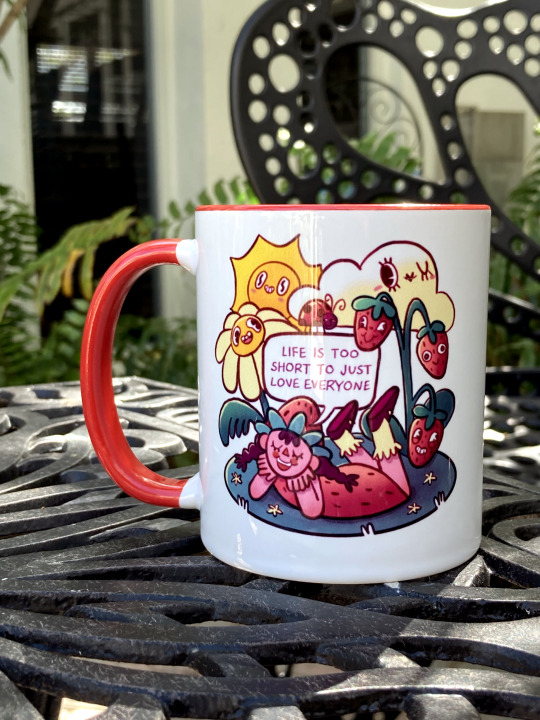
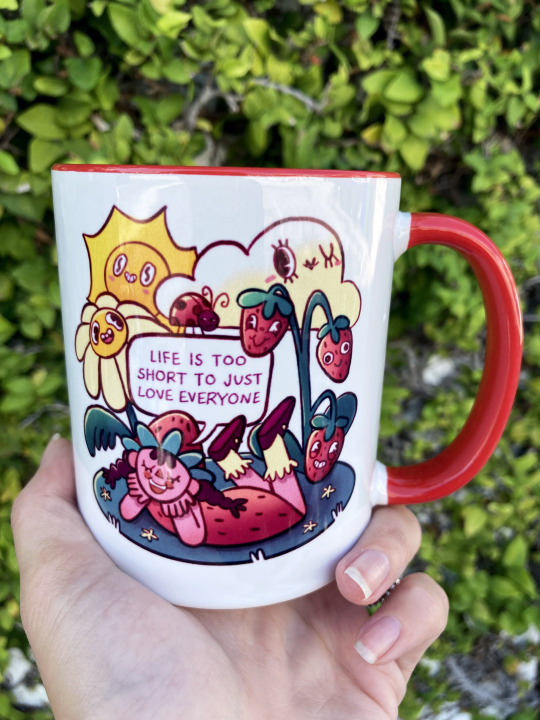
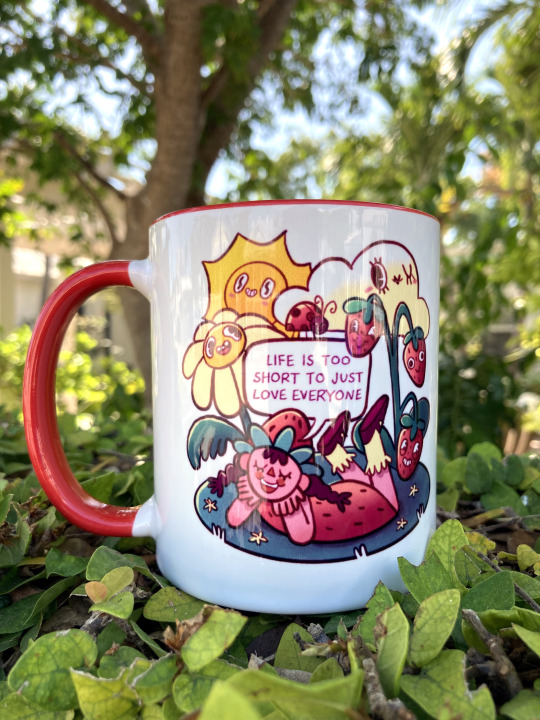
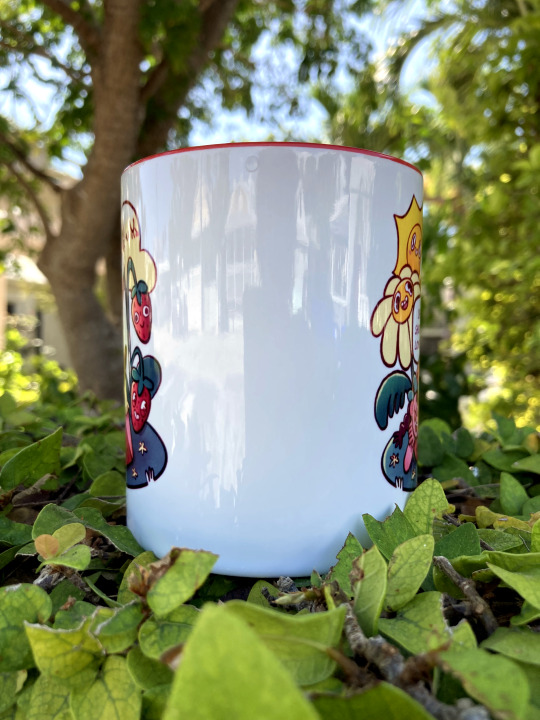
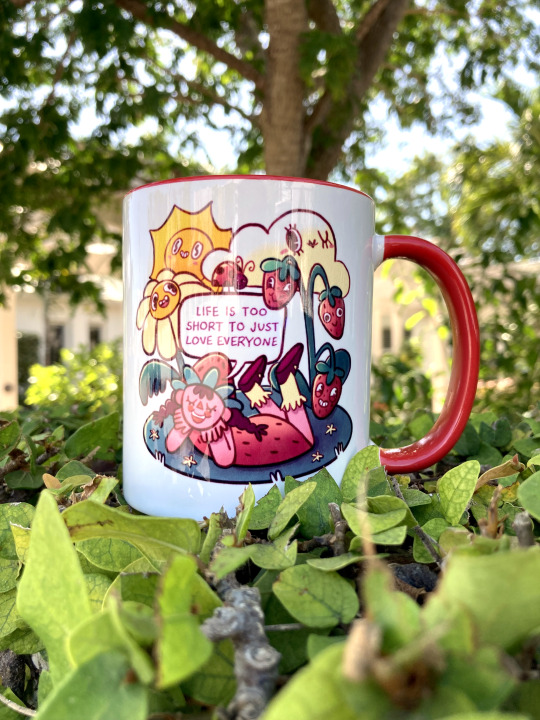
Life Is Too Short To Just Love Everyone Mug on Etsy
#art#etsy artist#etsy shop art#etsy mug art#mug art#mug design#cute mug art#cute mug design#retro cartoon style#vintage cartoon style#cute flower art#strawberry art#kawaii mug#printify vs printful#printful mug#print on demand mug#artists on tumblr#illustration#art of the day
3 notes
·
View notes
Video
youtube
Here's my Prinful vs Printify review for you so you can choose which print on demand (POD) provider is better for you. So If you're starting up, you'll should go for Printify https://bit.ly/printify_ ▬▬▬▬▬▬▬▬▬▬▬▬▬▬▬▬▬▬▬▬▬ Here are some promo links : ►► Printify promo link - https://bit.ly/printify_ ►► Printful special promo - https://bit.ly/Printful- ▬▬▬▬▬▬▬▬▬▬▬▬▬▬▬▬▬▬▬▬▬ However, If you're still not too sure which one should you choose. try and maybe mix both POD (print on demand) providers. here's a quick summary. Printify : ▬▬▬▬▬▬▬▬▬▬▬▬▬▬▬▬▬▬▬▬▬ Pros : offers better margins, more printing product categories Cons: uses 3rd parry printing suppliers , and the printing quality can really vary from high to low so you can risk high returns Printful ▬▬▬▬▬▬▬▬▬▬▬▬▬▬▬▬▬▬▬▬▬ Pros : printing in-house (so the quality is better controlled) Cons : almost X2 the cost of Printify so it will eat out your margins. Bottom line: if you have a large enough variations in your shop, use both to connect to Shopify/Etsy etc.. as it can allow you to sell products that one provider offers where the other doesn't.
#Printify#printly#Printify vs Printful#printful#Printful vs printify#print on demand#shopify#dropship#dropshipping
1 note
·
View note
Text
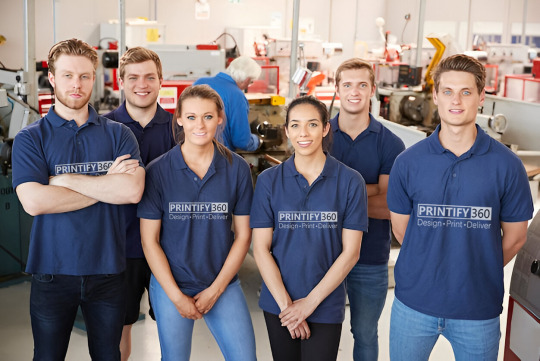
What to Consider When Choosing Fabric for Corporate T-Shirts
A corporate t-shirt isn’t just clothing—it’s a reflection of your brand. Whether it's worn by staff or handed out at an event, the fabric determines how it feels, fits, and lasts.
Here’s what to consider when selecting the right fabric for your corporate apparel:
1. Purpose of Use
Field Staff: Durable, breathable
Office Wear: Comfortable and presentable
Events/Promos: Lightweight and affordable
2. Fabric Composition
100% Cotton: Soft and natural, but may wrinkle
Cotton-Poly Blend: Durable, retains shape, less shrinkage
100% Polyester: Great for sports, quick-drying, breathable
3. Weight (GSM)
120–150 gsm: Lightweight, ideal for warm climates
160–180 gsm: Midweight, holds shape well
4. Color and Print Compatibility
Lighter fabrics are best for digital printing
Polyester works best with sublimation
5. Durability in Washing & UseLook for fabrics that resist shrinking, fading, and pilling—especially for frequently washed uniforms.
6. Seasonal SuitabilityLighter fabrics for summer, heavier knits for colder conditions.
At Printify360, we help you choose the fabric that works best for your goals, budget, and brand image. Let’s make comfort and quality part of your company identity
@printify360
#CustomDesign, #TshirtLovers, #HobbyStyle, #ClubMerch, #PrintOnDemandLife, #HomeDecorWithStyle
corporate t-shirt fabric, best shirt material, cotton vs polyester, branded apparel fabric, shirt material for staff, office wear t-shirts, t-shirt fabric comparison, breathable shirt material, shirt weight gsm, print-friendly fabric, business t-shirt durability, seasonal shirt fabrics, t-shirt design textile, marketing t-shirt material, company shirt comfort
#corporate t-shirt fabric#best shirt material#cotton vs polyester#branded apparel fabric#shirt material for staff#office wear t-shirts#t-shirt fabric comparison#breathable shirt material#shirt weight gsm#print-friendly fabric#business t-shirt durability#seasonal shirt fabrics#t-shirt design textile#marketing t-shirt material#company shirt comfort
0 notes
Text
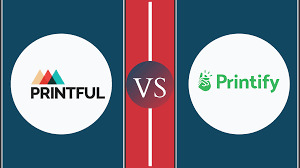
#printify#printful#printful vs printify#printify vs printful#printful vs printify vs teespring#printify vs printful 2021#which is better printful or print
0 notes
Text
Which Print-on-Demand Is Better Between Printful and Printify?
The POD (Print-on-Demand) business model, which is suitable for new entrepreneurs wishing to launch a firm, has taken a beating in the eCommerce sector. Two well-known POD businesses, Printify and Printful, let customers easily customize items like bags, sweatshirts, and T-shirts by printing them with their own designs. For a business owner and the success of the enterprise, selecting the best print-on-demand platforms is crucial.
Trying to decide which of the two top models is superior is never easy. We'll compare Printful and Printify side by side in this post so you can weigh their advantages and disadvantages to determine which is ideal for your business.
Which of Printify vs. Printful is superior? It's not only about which POD platform is superior; it's also about which one is best suited to your needs. Let's look at each platform's features and downsides to determine which is the best for you.
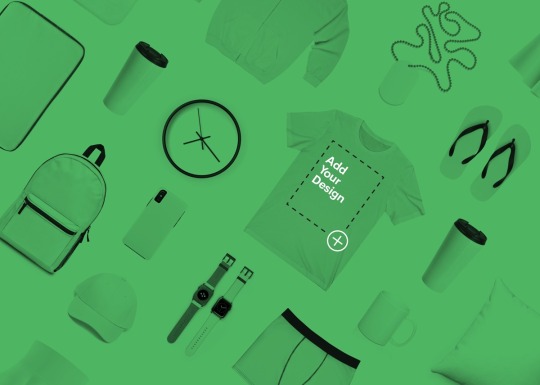
Pros and Cons of Printful
Pros of Printful
A large number of products to choose from
More integration options
An automated order fulfillment solution
Fast turnaround time
Higher printing quality
Many warehouses located in various countries
Easy to use
More support options and chances to join the community
Package boxes and slips with brand logo
Large customer base
Cons of Printful Its only minus point is that Printful is a bit expensive. It means you need to search your customer base to determine the suitable price for them to spend on custom branded products.
Pros and Cons of Printify
Pros of Printify
Higher margin
Flexible pricing plans
Cheaper products
Low shipping rates
Large number of products
Option to choose your printing provider
Cons of Printify
Fewer integrations
Limited branding services
Low printing quality for the long run
Watch more: Printful vs Printify: Which Print-on-demand is Better?
4 notes
·
View notes
Text
Re: Redbubble & Alternatives
Redbubble is doing some nonsense and I've deleted my account. I barely bothered with it anyway, was mostly there for people who've asked for specific images as posters.
Anyway in doing that I sacrificed the $4.35 that was still sitting in my earnings. They only let you cash out at $20, so rather than drum up sales and therefore make Redbubble more money, I'm gonna do what I feel is $4.35 in anti-publicity for them. 🥳
tl;dr there are new fees that hurt artist income at all sales levels. Redbubble is either looking to cut costs and raise profits for funsies, or is in serious financial trouble.
About the new fees:
Redbubble offers their services to artists by allowing artists to control their profit margin above a certain baseline manufacturing fee. This was pretty cool! There's now an additional fee that will be charged starting May 1, 2023. It is not an upfront fee that requires you to pay out of pocket, but it does directly cut your profit margin. How badly? Well...
By Redbubble's own example, if in one month you sell $300 in products that you had set at a 25% margin, you'd previously earn $75. Under the new structure, that earnings level means you pay a $28 fee, so you will now be paid $47. That $28 represents a 37% cut off what you were supposed to earn.
There's a full fee table in that link, but other highlights include a $1 fee if you earned $2 (aka 50%!) and big sellers who'd expect to take home $400 will now receive $320 (an $80 fee, 20%).
It also puts you in a weird spot that earning $1 more in a month may bump you to the next tier, causing you to actually take home less money. Make $1 more, end up losing $11. Make it make sense. 🤨
About the new tiers:
Each shop is evaluated and labeled Standard, Premium, or Pro. Premium and Pro shops are not subject to the new fees, but there's no clarity on how to move from one tier to another. Redbubble says it's under your control but it's clearly not. Many artists are reporting that they have accounts with next to no sales that have been labeled Pro, and accounts with thousands of annual sales that are labeled Standard.
Action items:
Look, I'm not gonna tell other artists that they have to close their shops, or tell buyers not to buy from Redbubble if your favorite artists have chosen to stay. What you do with the above info is up to you.
What I will say is that many artists are leaving because the new pay structure sucks. I encourage people who buy from Redbubble to expand their support to other sites.
Attrition is arguably their goal here—they know people will leave over this, and that'll probably lower their costs and lower competition for the remaining accounts. But goodwill is lost easily and they're playing a dangerous game on betting how many stay vs. leave. I'm out.
Feel free to leave your feedback on Redbubble's feedback form here, but it feels slightly like yelling into the void.
Alternatives:
tbh I don't have a good read on things. If you do know of any recommended (or unrecommended) print-on-demand sites, speak up!
I will say that as of now (April 2023), based on my research:
🟢 INPRNT sounds like a winner if your game is art prints and stickers. Does not have any wearable products like t-shirts.
🟡 Etsy + Printify/Printful might be viable? Etsy always had higher profit margins than POD marketplaces, but it's a bit more work and they also do weird things occasionally. Also has a listing fee so if you're the type to upload a ton of designs, pricey.
🔴 Teepublic is owned by Redbubble. Doesn't have the tier/new fee structure as of now but might be imminent. Have also heard their customer service sucks.
🔴 Society6 is going to charge artists shipping costs, and there's going to be a (mandatory?) subscription service launched in the fall, so that's not a winner anymore either.
634 notes
·
View notes